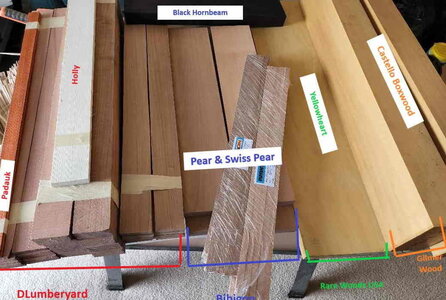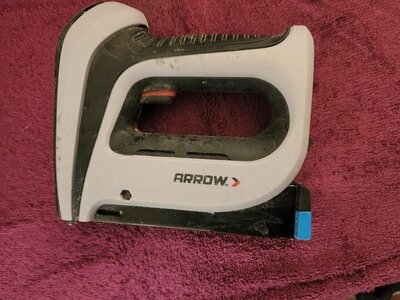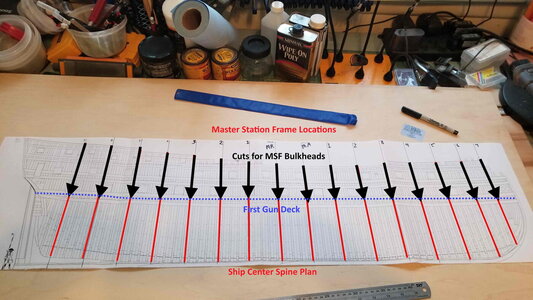I have the 9mm plywood backbone between 2 pieces of 1/2 inch tempered glass, glue drying. Throughout the project I will be changing gears to work on other things within the project, sometimes waiting for the previous step to cure, dry, etc. Sometimes out of my ADD needing a change.
There are quite a few items that are still not finalized.
1. Exactly what elements will I include, internally.
2. The final approach on the stern's construction. Will I build transom timbers? If so, how?
3. How will I transition the keel, stem & stern posts from 9mm plywood to a finished, presentable material?
4. Do I include some ambient lighting?
5. I do not plan to paint ANYTHING, hopefully. What wood combinations will be used? Need testing here.
6. What are my wood requirements?
Ok, so I do have a couple of the requirements above mostly figured out, mostly.

My planning has allowed me to determine my wood requirements, some traditional, some not, that I'm aware of.
Below is the wood I will be using, sourced from 4 different providers. The bulk of it from Dave Stevens (Dlumberyard). Some from my friend Sergey
@bibigon, RarewoodsUSA, and Gilmer Wood.

All of the wood is of the highest quality, no exceptions. It is clear that if I cannot build a quality model, it's not because of the wood!
My thoughts on usage is Pear & Swiss Pear for the build of the functional element. There is enough color contrast to use them together to create some contrast, hopefully pleasing to the eye. Holly I will attempt to use to accent small elements, functional and decorative. The Padauk, is still an unknown, but thoughts of using it as accent wood, perhaps for gun port sills & borders, but not used in excess. The Yellowheart, which I later found under other names, Brazilian Satinwood, I am toying with using as external planking from the main wales up. A will need to test it and how it finishes and its workability, but I'm optimistic. Castello Boxwood with be for decorative accent pieces and carvings. I included approximately a 20% overage on my orders to account for unforeseen needs and Hoss Errors!
The X factor is the Black Hornbeam. Sergey
@bibigon let me know it is in very short supply and to be fair to his customers he had to ration it. I completely understood and feel lucky to have been able to get any. With that said, I will need to be FLAWLESS in my processing of it as there is no extra.

This concerns me and I think, ultimately I will need to order some more from the EU supply source Zoly provided.
It's always something.

Till next time....














